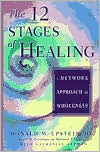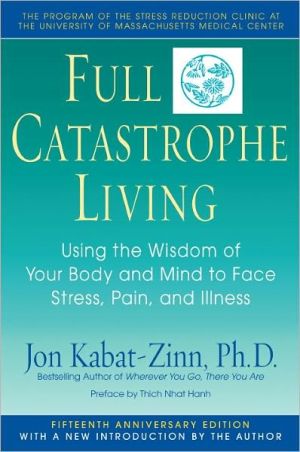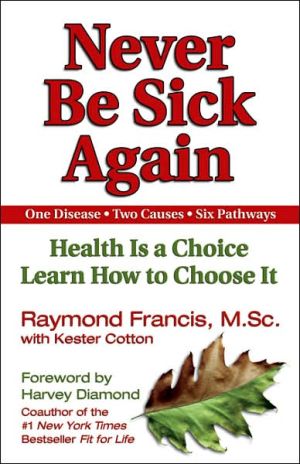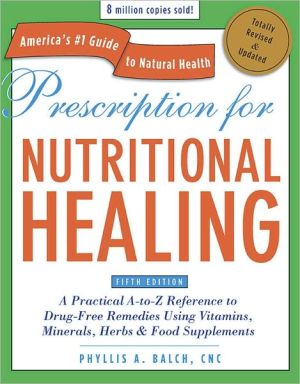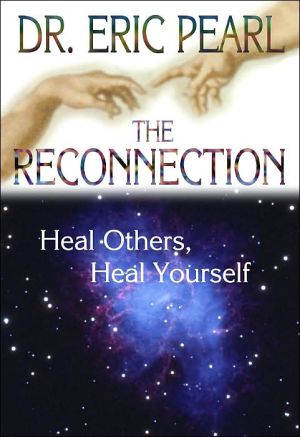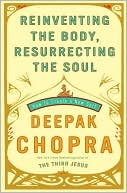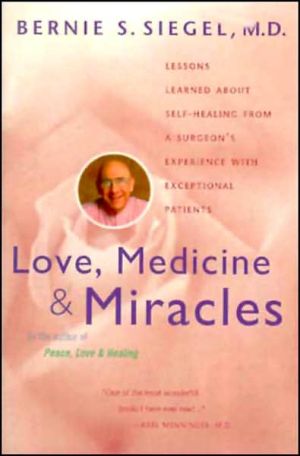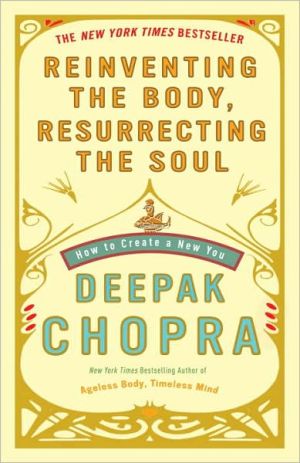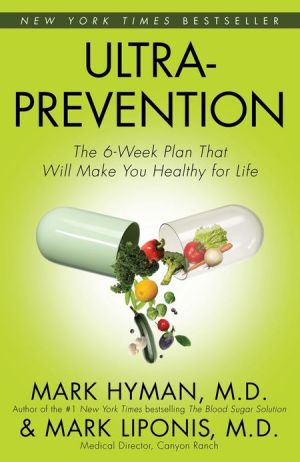12 Stages of Healing: A Network Approach to Wholeness
The Twelve Stages of Healing offers us fascinating insights into the complex relationship between mind, emotions, and body, and shows us how we can use these insights to promote greater health in our bodies and harmony in our relationships. \ After observing thousands of people in both private practice and public seminars, Dr. Epstein discovered twelve basic rhythms, or stages of consiciousness, shared by all humanity. Each stage of healing has a distinct "rite of passage" -- a chaotic...
Search in google:
The Twelve Stages of Healing offers us fascinating insights into the complex relationship between mind, emotions, and body, and shows us how we can use these insights to promote greater health in our bodies and harmony in our relationships. After observing thousands of people in both private practice and public seminars, Dr. Epstein discovered twelve basic rhythms, or stages of consiciousness, shared by all humanity. Each stage of healing has a distinct "rite of passage" -- a chaotic experience or healing crisis-- that healps us to reunite with aspects of ourselves that are traumatized, alienated, forgotten, abused, shamed, or unforgiven. Each stage also has a charcteristic pattern of breath, movement, and touch that can help us to reconnect with the natural, internal rhythms of our body and experience a greater sense of joy and well-being. The Twelve Stages of Healing takes us beyond traditional books on healing as it gently guides us through the lessons of each stage on a journey toward greater wholeness, spiritual awareness, and true healing in all areas of our life. Library Journal Epstein, a chiropractor for over 20 years who combines traditional chiropractic services with new mind/body principles, here describes how to progress successfully through 12 stages of consciousness. The healing practices he describes include suffering through ascent, concluding with spiritual knowing, and a sense of integration with oneself and the general community. Each chapter concludes with a special breathing exercise and affirmation for that stage of healing. Of course, Epstein allows for the "backsliders" and sadly reports that most people remain in stages 1 or 2 throughout their lives. (Part of the process, Epstein acknowledges, is seeking professional help along the healing path when necessary.) With the flourishing of authors like Bernie Siegel, Dean Ornish, and Deepak Chopra, this title will do well in public libraries with a demand for popular medical information.-Lisa Wise, Univ. of Southern Colorado, Pueblo
The 12 Stages of Healing\ A Network Approach to Wholeness \ \ By Donald M. Epstein \ New World Library\ Copyright © 1994 Donald M. Epstein\ All right reserved.\ ISBN: 1878424084\ \ \ \ Introduction\ Healing and Curing: Two Different Worlds\ Healing has little to do with the removal of symptoms. Rather, it is an intimate and integrative process that encompasses every aspect of our being-the entire spectrum of our existence. Healing transcends the simplistic notion of jumping out of a hospital bed or getting up from a wheelchair and walking; it involves the harmonious alignment of the physical, emotional, mental, and spiritual aspects of our being and how we relate to the world. The result is a greater experience of wholeness, wellness, and soundness. And wholeness is the birthright of every living being.\ In his essay "The Spirit in Health and Disease," psychiatrist Laurence J. Bendit spoke of healing as a process of rebuilding one's life anew from chaos and disorder:\ Healing is basically the result of putting right our wrong relation to our body, to other people and ... to our own complicated minds, with their emotions and instincts at war with one another and not properly understood and accepted by what we call "I" or "me." The process is one of reorganization, reintegration of things that have come apart.\ In this book healing and curing are not used interchangeably. The word heal traces its roots tothe Anglo-Saxon word bal, which means "whole," "hale," or "hearty." Rather than implying freedom from disease, healing involves root concepts like wholeness and wellness. These concepts imply self-empowerment, alignment, and integration, which enable us to fully express our unique potential as human beings in all aspects of life. Healing is often an uncomfortable process, but always empowering.\ As we heal, it may appear that we are coming apart at the seams when we begin to wake up to aspects of ourselves that we were unaware of or were unable to acknowledge. But as we begin the process of discovery, acknowledgment, and alignment, our entire being is given permission to change. Through the natural, automatic release of old thought patterns, blocked emotions, and rigid ways of being, a new sense of respect for all our aspects and rhythms comes about. This is similar to the subtle, quiet, yet purposeful opening of a flower. In healing, no new magic is put into us and nothing is taken out.\ Curing, on the other hand, implies that someone is trying to eliminate our disease, symptom, or crisis, most commonly through medication, surgery, psychotherapy, or other modalities. In the words of Janet F. Quinn, Ph.D., R.N., professor of nursing at the University of South Carolina,\ Curing may be conceptualized as the elimination of the signs and symptoms of disease. Typically people enter the health care system when indicators of illness can no longer be ignored. The signs and symptoms will be treated with medication, or if the signs and symptoms are severe enough, hospitalization will ensue. If, after a certain course of treatment by surgery and/or drug therapy, the signs and symptoms no longer exist, then we say that the person has been cured.\ Curing has an important role. It offers us the gift of time so we might better understand the deeper significance of our symptoms, Curing can also offer us a greater degree of comfort to facilitate the process of realignment and redirection. When used as a stepping stone or rest stop to healing, curing can be beneficial. However, the way curing is regarded today can often deny the possibility of healing rather than facilitate it. Curing as an attempt to control our experience generally interferes with our ability to move into the unsolicited experiences we need to restructure our lives. When this occurs, instead of propelling us forward, curing holds us back.\ Healing leaves in its wake a sense of accomplishment, fulfillment, and empowerment. Curing does not. Healing considers our uniqueness. Curing does not. Healing involves surrendering control of our inner and outer experiences. Curing involves an attempt to control our internal and external environments. Healing promotes wholeness, an uninhibited expression of natural rhythms, and unprovoked forgiveness. Curing seeks to label the effects (not the causes) of disease, place blame, and give explanations and excuses for undesirable experiences.\ The Spiritual Aspect of Healing\ The spiritual side of human nature is an essential, yet often overlooked, aspect of the healing process. The word spiritual comes from the Latin spiritus and spirare, meaning "to breathe" or "to blow." Spirit is something that cannot be seen, but can be experienced. In the poetic words of an anonymous teacher,\ There is a force that is unfathomable, omnipresent, unnameable, and omniscient. This intelligent and loving force stands behind and guides the evolution of physical manifestation. Spirituality is the label used to describe what occurs when we connect with this source.\ The source of spirituality has many names: Organizing Wisdom, Great Spirit, the Christ Within, the Atman, or God. Connecting with this source is an automatic process that often occurs when we least expect it. Rather than being the result of searching and seeking, spiritual truth occurs by removing the blocks that prevent our knowing it. It is like being in a dark room and opening the blinds to let the sunlight in. By opening to our spiritual nature, we open to the new and the unexpected. According to Ernest Kurtz and Katherine Ketcham in The Spirituality of Imperfection.\ Spirituality points, always, beyond: beyond the ordinary, beyond possession, beyond the narrow confines of self, and-above all-beyond expectation. Because the "spiritual" is beyond control, it is never exactly what we expect.\ The spiritual aspect of healing involves tapping into the deeper levels of being where our innate intelligence resides. As we connect to our inner rhythms and greater sense of wholeness, we begin to experience the rhythms, wholeness, and interconnectedness around us, which eventually expands to include the entire human and planetary community. Holistic physician and psychiatrist George L. Hogben described healing in Spiritual Aspects of the Healing Arts,\ Healing may be defined as a miraculous unfolding of consciousness for one's being in the world. We learn who we are, what and who really matter to us, how to express ourselves fully and openly. Ultimately, the healing journey leads to an intimate union with God through the experience of the flow of God's spirit within. It is a slow, arduous passage, unique for each individual, filled with danger and risk, triumph and joy, and finally, peace, trust, awe, reverence, love, tenderness.\ Healing: A Broad Scope\ The approach to healing presented in this book goes beyond dealing with a health problem or a healing crisis. It can also be used to enhance your relationships, career, financial investments, dietary habits, spiritual life, approach to education, the goods and services you use, and the institutions and causes you support. It is not intended as therapeutic information for any physical or emotional condition,\ If you feel you need assistance from a health professional at any point in the healing process, please seek help; in some cases, doing so may even prolong your life. But do not confuse curing with healing. After you have addressed your immediate health concern, and you are out of impending danger and feel more comfortable, I invite you to return to the Twelve Stage healing process and move along the spiral path toward wholeness.\ \ \ \ \ Excerpted from The 12 Stages of Healing by Donald M. Epstein Copyright © 1994 by Donald M. Epstein\ Excerpted by permission. All rights reserved. No part of this excerpt may be reproduced or reprinted without permission in writing from the publisher.\ \
\ Library JournalEpstein, a chiropractor for over 20 years who combines traditional chiropractic services with new mind/body principles, here describes how to progress successfully through 12 stages of consciousness. The healing practices he describes include suffering through ascent, concluding with spiritual knowing, and a sense of integration with oneself and the general community. Each chapter concludes with a special breathing exercise and affirmation for that stage of healing. Of course, Epstein allows for the "backsliders" and sadly reports that most people remain in stages 1 or 2 throughout their lives. (Part of the process, Epstein acknowledges, is seeking professional help along the healing path when necessary.) With the flourishing of authors like Bernie Siegel, Dean Ornish, and Deepak Chopra, this title will do well in public libraries with a demand for popular medical information.-Lisa Wise, Univ. of Southern Colorado, Pueblo\ \
